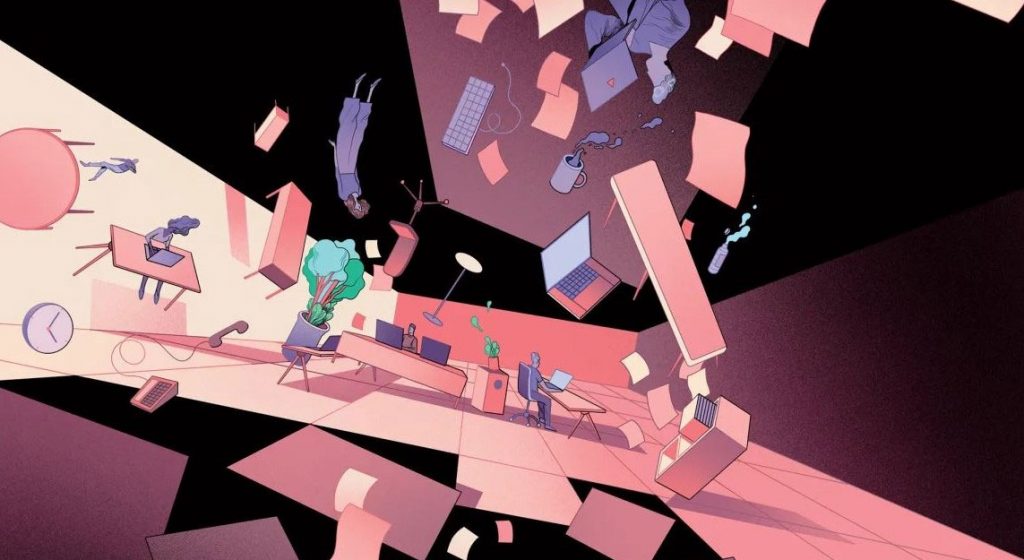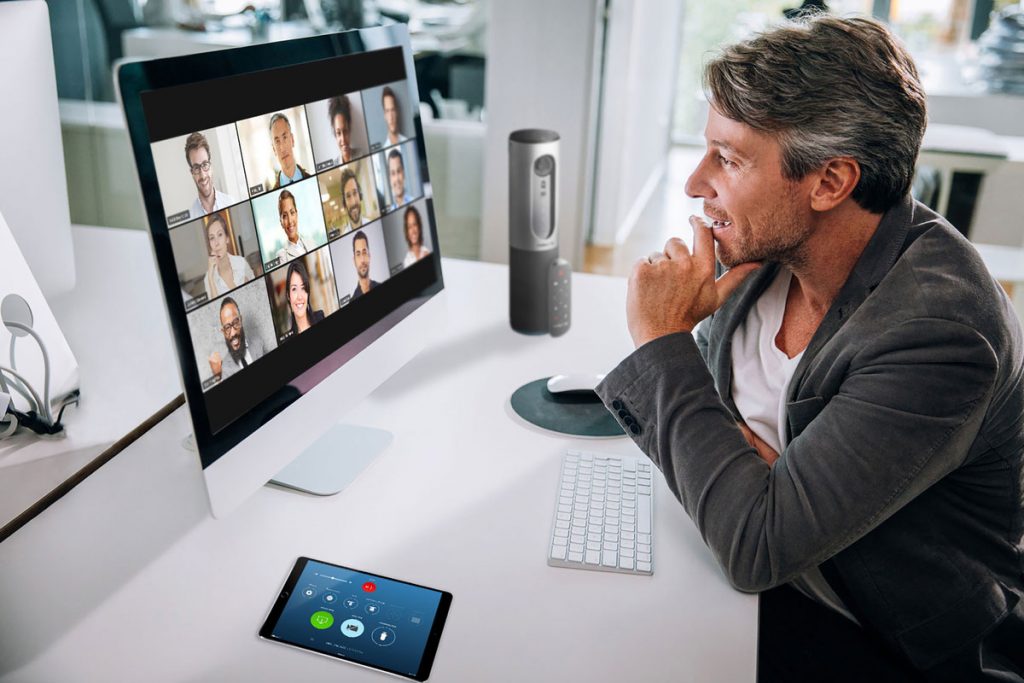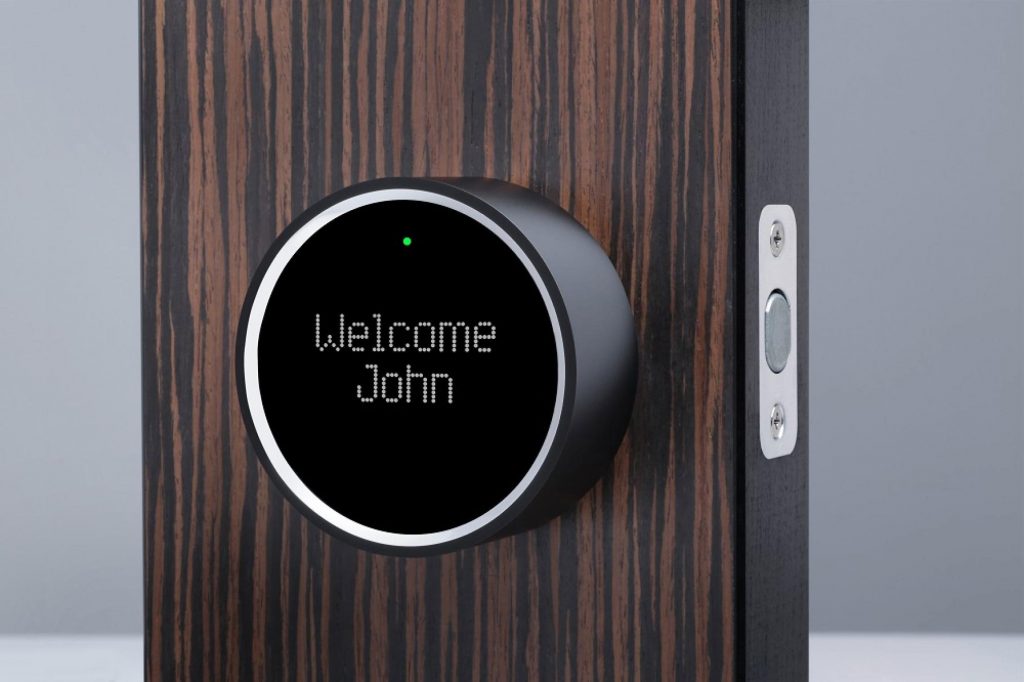
The world has changed, or so we keep hearing. At the outset of the global pandemic, most companies and workplaces moved to implement working from home procedures quickly in order to maintain their core business services. This was seen as temporary solution.
Over the following weeks however, it emerged that the proposed social distancing rules in order to combat the pandemic could spell the demise of the traditional workplace, after all, working from home was safe, and, to the surprise of most, an effective adaptation. Many jobs have successfully pivoted into remote roles, deadlines are still being met, and virtual meetings are working. So why do we need offices? Is it time to let this concept go?
While remote working has proved a viable and efficient solution to the current situation, recent findings from Gensler’s Work From Home (WFH) Survey 2020, has indicated that most people want to return to the workplace—albeit with an increase in more flexible working policies, such as being able to work from home on an average 2-3 days per week.
Face to-face communication contributes to all kinds of wellbeing including physical, cognitive, and emotional.
Tracy Bower
As it turns out, we’re not quite ready to let go of the office. As flexible as remote working is for adapting to change, some key elements of the traditional workspace are missing which benefit us both as individuals and as a workforce.
As Ph.D. sociologist and author of “Bring Work to Life by Bringing Life to Work”, Tracy Brower, noted, “face-to-face communication contributes to all kinds of wellbeing including physical, cognitive, and emotional” in addition that, “the office also provides a critical sense of common ground. Any company knows that to deliver powerful results, they must ensure people have a sense of shared purpose and aligned objectives.”
It is clear from this research that the office still matters, therefore how do we rethink the workplace in order to provide a safer, more versatile and suitable working environment? We have identified 9 key areas that will fundamentally change both workplace design and operation.
01. New Habits
To ensure people feel safe, healthy, and ultimately, valued in their workplace, we must adopt new habits and routines in the working environment. So what does this look like? Well, until there is an available vaccine, face masks are going to play a big part in getting people back into enclosed spaces, especially if offices and workplaces are unable to maintain social distancing.
Possible temperature checks could be implemented when workers enter the building, and of course, regular hand sanitisation, cleaning protocols, and a general increase in good hygiene practices.

02. Sanitising routines
Regular cleaning and sanitisation is going to be critical in order to stop the spread of disease and should be a priority moving forward. What is the difference between the two? Well, according to the Office Sanitation & Disinfection after Covid-19 , produced by Steelcase “…cleaning removes germs, dirt and impurities from surfaces or objects with detergent and water. Cleaning does not necessarily kill all germs but lowers their numbers and the risk of spreading infection. Where sanitisation lowers the number of germs on surfaces or objects to a safe level…”
In the past, offices would be cleaned at the end of the working day, but now it’s likely that cleaning and sanitisation will need to be carried out in certain areas, particularly in high traffic areas, at regular intervals throughout the day. This is vital for public health, but also for providing employees with assurances that their workspaces are clean and safe to use.

03. Density Reduction
The ability to maintain social distancing will be one of the biggest challenges workplaces will face post-pandemic. In recent years, space provisions per person has steadily shrunk in order to maximise space and occupancy, with offices introducing things like linear bench style workstations and smaller desks. Open-plan offices have also become de rigueur.
However, this reduction in space between employees does not lend itself to social distancing guidelines. So how can companies solve this without moving to a different space? Well, to begin with, carrying out an audit of your current space plan will help identify what changes are required to be within guidelines.
In the short term, this means reducing the density of employees by removing every other workspace position and creating boundary zones between remaining positions. This could be achieved by assigning some employees to work from home, staggering shifts for groups of workers, or offering employees alternative areas to work in on certain days.
Companies can also look to the relocation and/or reorientation of workstations, for instance, workstations should be set out in such a way that employees do not sit directly opposite each other. Where this is not possible it is recommended that increased height desk screens be introduced.

04. Shared & Communal Spaces
Reception
It’s likely that receptions will have a new role to play in controlling access into offices, as they will effectively form the first barrier or checkpoint for staff and visitors. Reception staff can assist in temperature checks, monitoring occupancy levels, and can provide explanations for any circulation restrictions, wayfinding and social distancing signage throughout the building.
In addition, there may be requirements for visitors to sign Health & Safety waivers, or agree to new policies and procedures, prior to being issued with their access pass.

Meeting rooms
The capacity of meeting rooms is likely to be reduced by approximately 50% to enable social distancing to be maintained. Meeting rooms will need to be booked in advance to help minimise traffic outside the rooms. Set schedules for meetings will also enable the implementation of buffer times in between meetings for cleaning in order to limit social distancing guidelines being compromised.
The enhanced cleaning regime in meeting rooms may take the form of sanitising stations, which would need be set up in each room, so employees can wipe down high-touch surfaces and equipment before and after each meeting.
Breakout areas / tea prep facilities
Breakout areas are traditionally a place where employees gather, and as such, will be higher risk areas. So how can these areas still be maintained? Well, their use will need to be modified and monitored carefully to ensure hygiene and social distancing measures are being adhered to by users.
The installation of contactless sensor taps, touchless bins, directional signage to establish a one-way system and the mandatory use of face masks in these areas should assist in minimising the risk to employees. Companies can remove chairs, and organise the furniture in order to promote distancing, whilst still recognising some employees may want to socialise (albeit at a safe distance). As with other communal areas there will be the need for an enhanced cleaning regime throughout the day.
Corridors, lifts and stairs
Primary circulation routes throughout the building and other high traffic areas, such as lifts and stairs present potential bottle necks, and are perhaps one of the biggest challenges to social distancing guidelines. To reduce this risk, it’s likely that these areas will need to become one-way systems. Lifts will also need to have new occupancy levels and those using the stairwells will have to follow social distancing guidance. Depending on the building’s footprint, some stairs may be allocated as up-only and others as down-only. These measures will need to be clearly signposted throughout, with visual markers on both the floor and walls.
Everything has been about breaking down barriers between teams, but I don’t think spaces will flow into each other so much anymore.
Arjun Kaicke
Arjun Kaicke, head of analytics at Zaha Hadid Architects, mused on how communal spaces will change. “I think we’ll see wider corridors and doorways, more partitions between departments, and a lot more staircases….Everything has been about breaking down barriers between teams, but I don’t think spaces will flow into each other so much anymore.”
05. Wayfinding & Distancing
New wayfinding strategies should be implemented, and signage posted to clearly illustrate how people can move throughout the building. Peter Maxwell at Frameweb says that “giving people simple signals as to where they should walk, stand and sit will help users both feel safe themselves, and also reduce anxiety that they might be endangering others.”
06. Agile Working
The pandemic has forced many of us to embrace remote working, but this has turned up some surprising results. Initial reports have indicated that most workplace environments have seen an increase in performance and productivity. Businesses have also been noting that there are some significant benefits to encouraging home working when it comes to running costs.
... an opportunity to reimagine how we work.
According to Google’s CEO, Sundar Pichai, the pandemic has created “an opportunity to reimagine how we work.” We agree. Flexible working policies will not only enable businesses to reduce their occupant capacity to meet social distancing requirements, but remote working has been shown to reduce absenteeism, increase retention, and empower employees with a greater sense of control over their health and wellbeing.

07. Touchless Tech
We are told that the best way to stop the transmission of Covid-19 is by washing our hands, therefore it should come as no surprise that there is an increased demand for the development and introduction of more touchless technology and devices for the workplace environment moving forward, in order to avoid unnecessary shared contact on surfaces.

Examples of this tech are already available in some workplaces, clear digital signage for meeting rooms, that allows users to book a room from their own PC or mobile. This can help to avoid people congregating outside a meeting room, effectively creating a barrier, and impacting on primary and secondary circulation routes.

Voice activation is now currently available on most PC’s operating systems and software, which will enable the user to execute several commands without the need to touch the screen or input device, i.e. Video Conferencing / screen sharing etc. Manufacturers are integrating new touchless features in interior design elements including touchless taps, automated window shades, and motion-sensor or voice-activated door hardware.
08. Clean Air
Air quality, temperature and noise transmission are some of the most common complaints in a workplace environment. In previous years we have seen the level of fresh air reduced in mechanical ventilated spaces, opting for a recirculated filtered air system, as this was a more energy efficient way of providing the required level of fresh air.
Fresh air rates and treatments will therefore be required to be improved, however there are several advanced air purification and sanitization systems currently available.
Advanced air filtration systems can display real-time air quality measurements on digital screens to keep employees informed, and some can provide a level of continuous disinfectant, while also reducing viruses, bacteria, germs, and other allergens in the air.
08. New Materials
As we have seen in the healthcare sector, there is already an increased demand for hardwearing and easy-to-clean materials, surfaces and products.
Primarily we expect to see materials that can withstand regular deep cleaning in high-traffic areas such as lobbies, reception areas, bathrooms and kitchens.

Moving Forward
Necessity is the mother of invention, and with any crisis, people and businesses learn to adapt. All sectors are facing challenges right now, but this pandemic also presents an opportunity to create workspaces that are better, healthier, and more versatile, so we can meet the future head-on.
the role of the workplace will be to build community, to reinforce culture and shared purpose and mission...
Janet Pogue McLaurin
Janet Pogue McLaurin, the principal at Gensler said it best when she said that “the new role of the workplace will be to build community, to reinforce culture and shared purpose and mission, and to strengthen relationships with each other…. It will shift from a ‘work’ place for individual work to a ’convening’ place for group work.”
We couldn’t agree more. Rethinking the workplace isn’t just about the problems we have now but addressing the wellbeing and public health of the people that live in our future.
Let’s talk about you…
If you’re looking for some ideas and advice about your workplace post-pandemic, speak to us about your needs and concerns – we’re here to help when you’re ready.